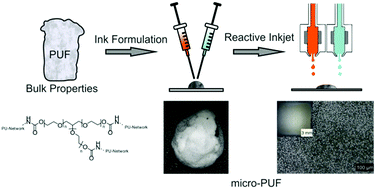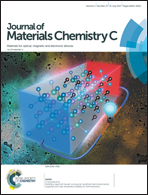Investigations of a catalyst system regarding the foamability of polyurethanes for reactive inkjet printing
Abstract
Reactive inkjet printing is a promising manufacturing tool for a variety of materials. Combined with polyurethane chemistry, it can be used to build micro-scale foams. Waterblown polyurethane foams based on polyethylene glycol 200 (PEG200), glycerol ethoxylate (Star-PEG) and 1,6-hexamethylene diisocyanate (HDI) were used to prepare the foams. The system was catalyzed using iron(III) chloride, dibutyltin dilaurate (DBTL), diazabicyclo octane (DABCO) and bis(2-dimethylaminoethyl) ether. The influence of iron(III) chloride and DBTL were investigated by means of creamtime measurements. Catalyst stability was tested for 32 hours within the formulation. Furthermore, the foam formation was observed placing microliter droplets on top of each other using thermographic recordings and FT-IR spectroscopy. The materials tested give inkjet printable fluids that can be used to produce polyurethane foams. Heat evolution due to the exothermic urethane and urea formation was observed within the droplets. FT-IR spectra confirmed the urethane and urea formation.



 Please wait while we load your content...
Please wait while we load your content...